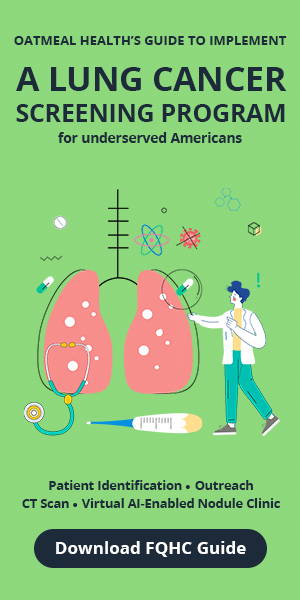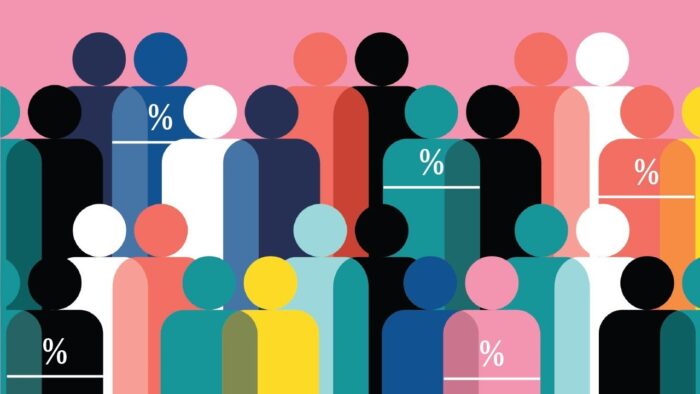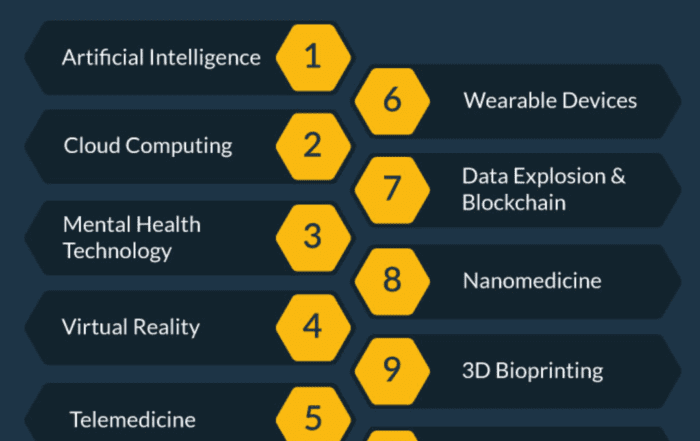Share this article and save a life!
Updated lung cancer screening criteria from the U.S. Preventive Services Task Force (USPSTF) are expected to succeed in broadening eligibility and reducing racial disparities in access to screening, researchers reported.
The new 2021 guidelines “effectively eliminated the racial disparity in eligibility seen with the previous fixed-criteria models” of the National Lung Screening Trial (NLST), the 2013 USPSTF recommendations, and the National Comprehensive Cancer Network (NCCN) group 2 guidelines, according to Chan Yeu Pu, MD, of Wayne State University School of Medicine and Karmanos Cancer Institute in Detroit, and colleagues, writing in JAMA Oncology.
Their retrospective study of close to 1,000 patients with lung cancer and nearly 1,500 controls without lung cancer found that the sensitivity of the new USPSTF criteria was better than that of the 2013 USPSTF criteria though worse than that of the 2012 modification of the model from the Prostate, Lung, Colorectal, and Ovarian Cancer Screening trial (PLCOm2012), while the specificity of the new USPSTF criteria was worse than that of the 2013 USPSTF criteria and PLCOm2012.
While the 2013 USPSTF criteria selected more white cases and excluded more African-American cases, there was no racial disparity in sensitivity or specificity with the 2021 USPSTF criteria and PLCOm2012, the team said.
While the NLST demonstrated that low-dose CT lung cancer screening showed a mortality benefit, the eligibility criteria disproportionately excluded African-American patients at high risk for lung cancer, Pu and co-authors explained. The USPSTF then broadened its lung cancer screening criteria in 2021 to include adults ages 50 to 80 who have a 20 pack-year smoking history and who are either currently smoking or quit within the past 15 years.
The study included 912 lung cancer patients (69% white and 31% Black) and 1,457 controls without lung cancer (58% white, 42% Black) who were enrolled in the INHALE (Inflammation, Health, Ancestry, and Lung Epidemiology) study in the Detroit metropolitan area between May 15, 2012, and March 31, 2018.
Sensitivity in the study was defined as the percentage of patients with lung cancer who qualified for screening, while specificity was defined as the percentage of controls who did not qualify.
Regarding the sensitivity of the criteria, the researchers found that with USPSTF 2021 criteria, 65% of lung cancer patients were eligible for screening, compared with 68% with PLCOm2012 criteria, 62% with NCCN group 2 criteria, and 49% with the 2013 USPSTF criteria.
Categorized by racial subgroups, these results were as follows:
- The 2013 USPSTF criteria identified significantly more white patients (52%) than African-American patients (42%) as eligible for screening
- The disparity was maintained when using the NCCN group 2 criteria (67% of white patients and 51% of African-American patients)
- This disparity was essentially eliminated, however, with use of the 2021 USPSTF criteria (65% of white patients and 63% of African-American patients) and PLCOm2012 criteria (68% of white patients and 67% of African-American patients)
Regarding the specificity of the criteria, the 2013 USPSTF guidelines excluded the most individuals from screening (65%), followed by the NCCN group 2 guidelines (59%), PLCOm2012 (58%); the 2021 USPSTF criteria excluded the fewest individuals (49%).
Specificity by racial groups showed:
- The 2013 USPSTF criteria excluded fewer white control participants than African-American control participants (61% vs 70%)
- This disparity was sustained with NCCN group 2 criteria (55% of white individuals vs 70% of African Americans)
- This racial disparity was again mitigated with the 2021 USPSTF criteria (48% of white participants vs 50% of African-American participants) and PLCOm2012 guidelines (57% of white participants vs 60% of African-American participants)
“In our study, the sensitivity and specificity of the 2021 USPSTF guidelines are close to those of the predictive model–based PLCOm2012 criteria, but are much more straightforward to use in a clinical setting,” the investigators wrote.
‘Pressing Need to Redefine Screening Criteria’
In a commentary accompanying the study, however, Jonathan A. Nitz, MD, of Fox Chase Cancer Center in Philadelphia, and Cherie P. Erkmen, MD, of Temple University Health System in Philadelphia, noted that even with refinements to screening criteria, a large percentage of patients with diagnosed lung cancer remain ineligible for screening.
“There is a pressing need to redefine screening criteria,” the editorialists wrote. “Further research exploring all of the risk factors for lung cancer, including genetic profiles, environmental exposures, and vulnerable populations, are necessary to develop precise criteria that can identify all individuals at high risk for lung cancer.”
The study provides “actionable information, affirming that adjustments to lung cancer screening criteria have the potential to mitigate disparity in screening and perhaps lung cancer outcomes,” Nitz and Erkmen concluded. “However, critical issues of low uptake of screening and inability to capture at-risk populations are unresolved and likely disproportionately affecting marginalized populations.”
Disclosures
Pu reported no conflicts. Co-authors reported grants from Wayne State University/NCI during the conduct of the study, and grants from Kaiser Colorado, University of Pennsylvania, and University of North Carolina/Genentech; having a contract from the state of Michigan to integrate smoking cessation with lung cancer screening within a health system; and having a contract from NCI outside of the study; and financial relationships with Takeda, AstraZeneca, Genentech/Roche, Pfizer, Jazz Pharmaceuticals, Novartis, Eli Lilly, Bristol Myers Squibb, Daiichi, Merck, Janssen, Boehringer-Ingelheim, Novocure, and Blueprint.
Nitz reported no conflicts; Erkmen reported receiving partial support from the Temple University Fox Chase Cancer Center and Hunter College Cancer Health Disparity Partnership, NCI, and an American Cancer Society-Pfizer Award to Address Disparity of Cancer Care among African-American individuals.
Primary Source
JAMA Oncology
Secondary Source
JAMA Oncology
Source Reference: Nitz J, Erkmen C “New 2021 USPSTF lung cancer screening criteria — an opportunity to mitigate racial disparity” JAMA Oncol 2022; DOI:10.1001/jamaoncol.2021.6708.
Share this article and save a life!
Author:

Jonathan is a seasoned executive with a proven track record in founding and scaling digital health and technology companies. He co-founded Oatmeal Health, a tech-enabled Cancer Screening as a Service for Underrepresented patients of FQHCs and health plans, starting with lung cancer. With a strong background in engineering, partnerships, and product development, Jonathan is recognized as a leader in the industry.
Govette has dedicated his professional life to enhancing the well-being of marginalized populations. To achieve this, he has established frameworks for initiatives aimed at promoting health equity among underprivileged communities.

![author['full_name']](https://clf1.medpagetoday.com/media/images/author/MikeBassett_188.jpg)




